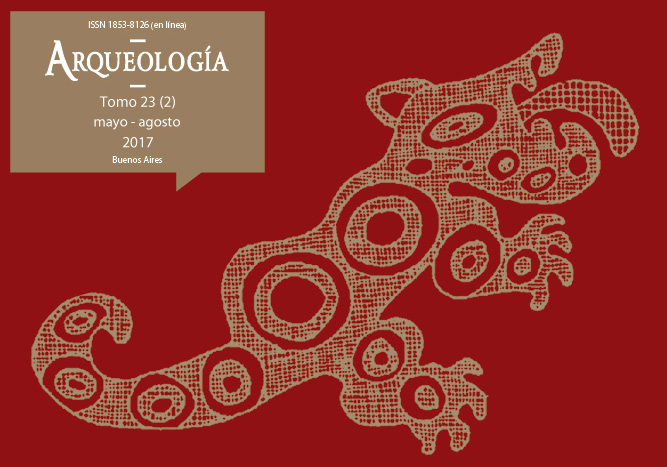Nuevas investigaciones sobre la tecnología ósea en el sudoeste de la Provincia de Buenos Aires. Procesos de manufactura y uso
Palabras clave:
Tecnología ósea, Análisis funcional y tecno-morfológico, Cazadores-recolectores, Sudoeste bonaerense
Resumen
Se presentan nuevos datos del análisis tecno-morfológico y funcional de artefactos óseos provenientes de sitios ubicados en entornos acuáticos del sudoeste de la Provincia de Buenos Aires; cronológicamente se asignan al Holoceno medio y tardío. Los artefactos presentan morfologías diversas que incluyen puntas aguzadas, romas y un bisel. En algunos fue posible identificar trazas diagnósticas de la cinemática y de las superficies sobre las cuales se trabajó. En los artefactos procedentes de contextos del Holoceno medio, las acciones inferidas corresponden a movimientos transversales sobre superficies duras, incluso el trabajo sobre roca. Por su parte, en aquellos datados en el Holoceno tardío se observaron evidencias de acciones rotatorias sobre superficies blandas y transversales producidas por el trabajo sobre cuero.Descargas
La descarga de datos todavía no está disponible.
Cómo citar
Frontini, R., Álvarez, M., Salemme, M., Vecchi, R., & Bayón, C. (1). Nuevas investigaciones sobre la tecnología ósea en el sudoeste de la Provincia de Buenos Aires. Procesos de manufactura y uso. Arqueología, 23(2), 137-146. https://doi.org/10.34096/arqueologia.t23.n2.3782
Sección
Notas
Los autores/as que publiquen en esta revista aceptan las siguientes condiciones:
- Los autores/as conservan los derechos de autor y ceden a la revista el derecho de la primera publicación, con el trabajo registrado mediante Licencia Creative Commons 4.0 Internacional (CC-BY-NC-SA), que permite a terceros utilizar lo publicado siempre que mencionen la autoría del trabajo y a la primera publicación en esta revista.
- Los autores/as pueden realizar otros acuerdos contractuales independientes y adicionales para la distribución no exclusiva de la versión del artículo publicado en esta revista (p.e. incluirlo en un repositorio institucional o publicarlo en un libro) siempre que indiquen claramente que el trabajo se publicó por primera vez en esta revista.
- Se permite y recomienda a los autores/as a publicar su trabajo en Internet (p.e. en sus sitios web personales o en depósitos institucionales), tanto antes como después de su publicación en esta revista, siempre y cuando proporcionen información bibliográfica que acredite, si procede, su publicación en ella. De esta manera, pueden favorecerse intercambios productivos y a una mayor y más rápida difusión del trabajo publicado (vea The Effect of Open Access).



.png)

(1)13.png)






1.jpg)
1.png)
1.jpg)


13.png)
1.png)


(1)1.png)









